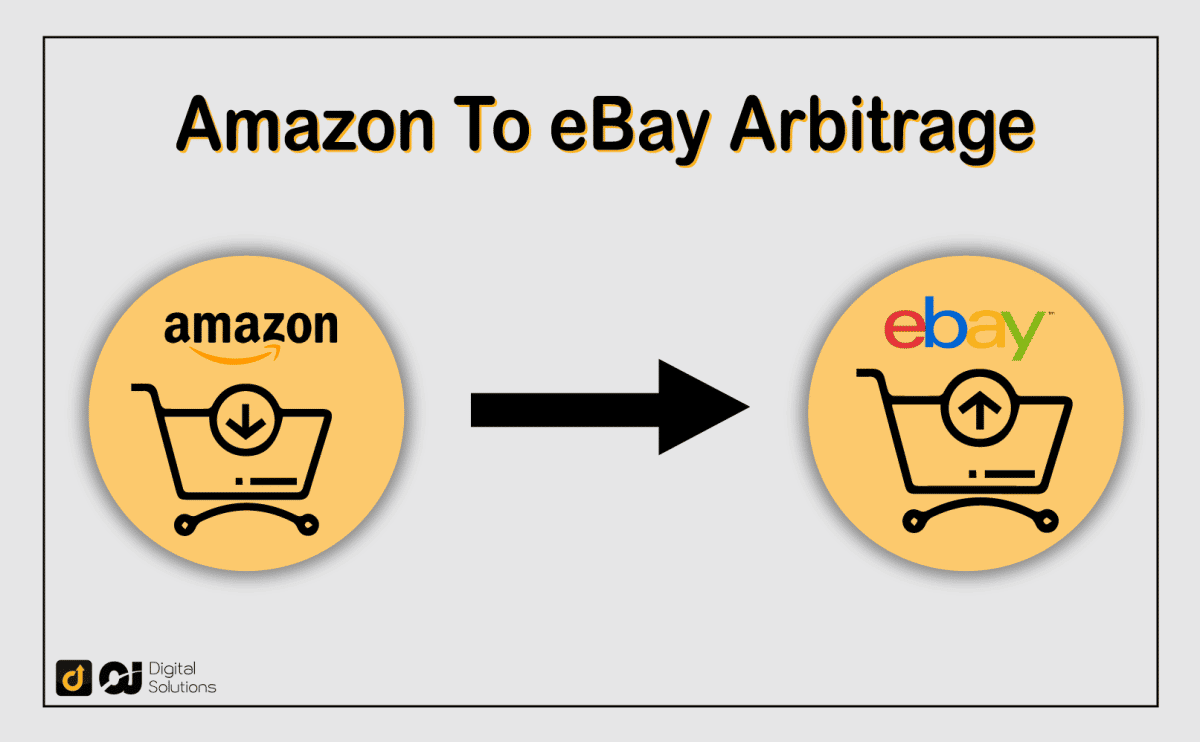Amazon to eBay arbitrage is the process of buying low on Amazon and selling high on eBay, allowing you to make a profit without the hassles of other online business models.
Do you want to learn how to make a profit using this business model?
Well, you’re in luck.
I’ve personally helped many sellers achieve financial success with this process, and now I’ll also share with you the ins and outs of arbitrage.
I’ll discuss critical information like how it works, starting this business, and some software you can use.
Let’s get started.
What Is Amazon to eBay Arbitrage?
In retail, arbitrage means to purchase products at low prices in one marketplace and resell those products at higher prices in another marketplace.
In terms of this article, it means buying products from Amazon and reselling them on eBay.
Here’s a simplified version of how it works:
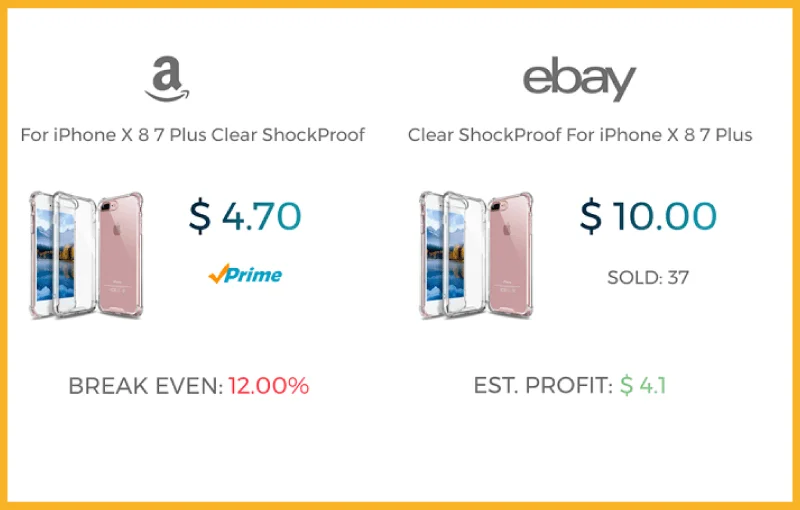
- You search for products on Amazon and an iPhone case sold at $4.70.
- You buy ample stocks, and list the same product on eBay for the original price of $10.
- A customer buys from you, and you pocket the price difference of $5.30 (not including other costs and expenses).
How Is It Different From Other Business Models?
Note: Retail arbitrage is not a dropshipping business.
A lot of people have asked me about the differences of arbitrage and dropshipping, as the internet contains a lot of misinformation about these two different models.

Retail Arbitrage vs. Dropshipping
Retail arbitrage involves purchasing products from one retail source (like Amazon) at a lower price and reselling them at a higher price on another platform (eBay).
In contrast, dropshipping revolves around selling products without holding inventory.
Dropshippers act as intermediaries, partnering with suppliers who ship products directly to customers.
While both models involve online sales, retail arbitrage sellers make upfront purchases to have and maintain inventory. Drop shippers focus on making sales without inventory.
Retail Arbitrage vs. Wholesale
Wholesale models center around buying products in bulk at discounted rates and reselling them at a higher price.
Retail arbitrage contrasts by focusing on identifying and purchasing individual products at retail prices from one platform and selling them at a higher price on another platform.
Wholesale business operates on larger scales and deeper supplier relationships, while retail arbitrage capitalizes on exploiting price differences between platforms without large-scale inventory commitments.
Retail Arbitrage vs. Private Label
Private label involves sourcing generic products, rebranding them as proprietary items, and selling them under a specific brand.
Retail arbitrage differs by focusing on reselling existing products without rebranding or altering them.
Private label requires a more comprehensive approach, including branding, marketing, and often higher investment in inventory, while retail arbitrage involves comparatively lower upfront costs and a faster turnaround by leveraging existing popular products.
How Does Amazon to eBay Arbitrage Work?
You’re probably thinking, if Amazon prices are lower, why doesn’t the eBay buyer just go there?
Arbitrage works because the customer has specific habits. The simplest reason is that they don’t check.
Often, a buyer won’t bother comparing prices on both amazon and eBay to check for the best price. If they see it on eBay first, they’ll buy it there.
Another reason is that maybe Amazon doesn’t ship that specific product to the buyer’s country, even with a Prime account. Perhaps Amazon’s shipping fees are too expensive.
In such cases, the customer may find eBay’s Global Shipping Program a more favorable option, even if the product is cheaper on Amazon.
Is Amazon to eBay Arbitrage Legal?
Yes. There are no laws prohibiting this kind of practice.
However, there are some policies on the individual marketplaces you should know.
What Are eBay’s Rules for Retail Arbitrage?
When you sell on eBay, you must abide by the applicable rules and guidelines for sellers. Other than these, there’s no rule against retail arbitrage.
However, here’s a policy to keep in mind:
eBay generally doesn’t allow dropshipping if you’re buying from another marketplace and having them send it directly to the eBay buyer’s address.
This means that you can’t skip the step of buying it from Amazon first and holding it in inventory before selling it on eBay.
Having the item shipped directly from Amazon means the customer will receive an eBay purchase in an Amazon box, confusing them and potentially causing you a negative review.
What Are Amazon’s Rules for Retail Arbitrage?
Unless you’re selling on Amazon, there are no rules that might apply to you.
In the eyes of the platform and Amazon sellers, you’re just a regular customer taking advantage of low prices and huge discounts.
How To Start Amazon to eBay Arbitrage: 4 Steps
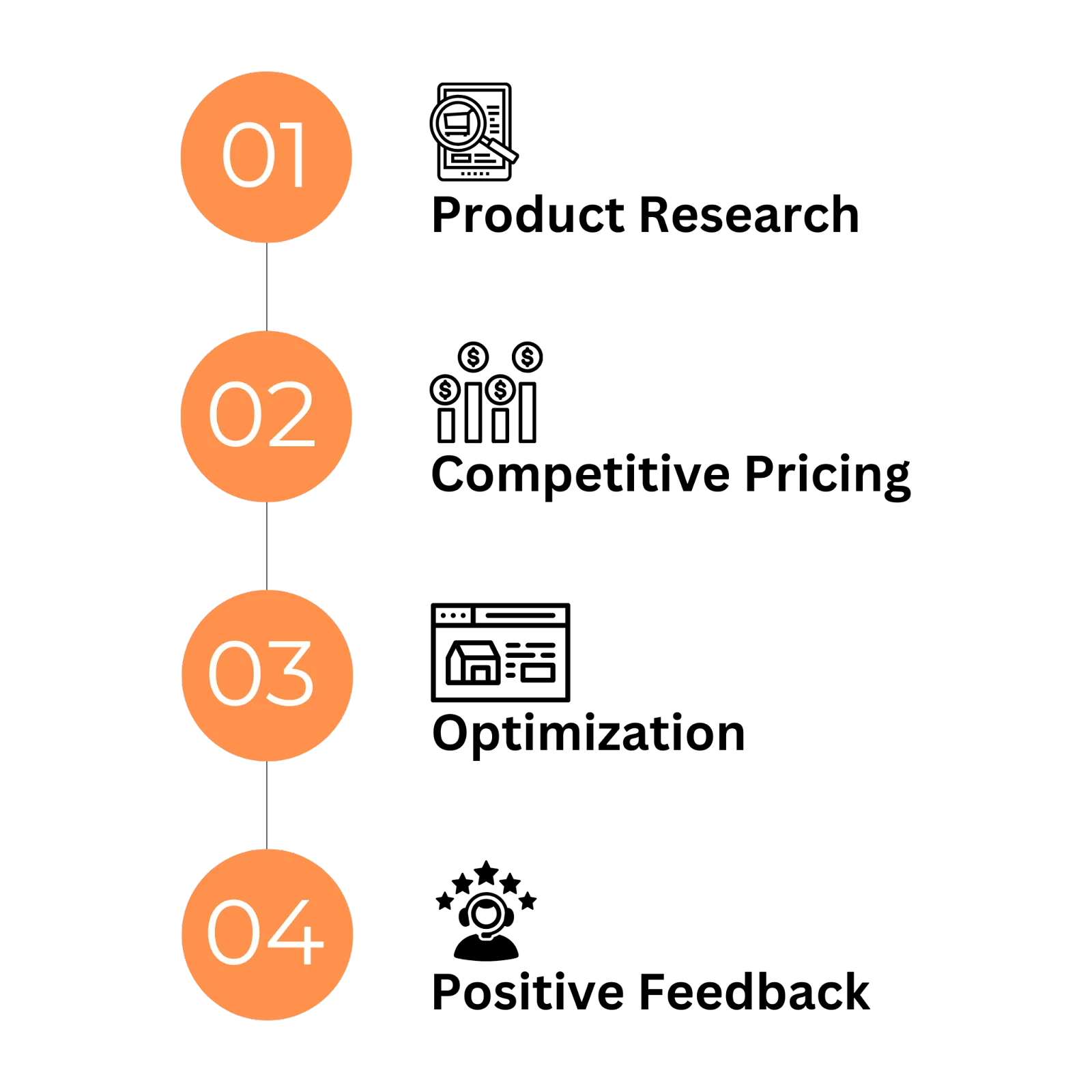
Research Profitable Items To Sell.
Identify products with significant price differences between the two platforms. You can use tools to help you with research and scout items that are cheaper on Amazon than eBay.
In general, here are the qualities you’re looking for:
- Consistent or high demand
- Authentic
- Good quality
- Low competition
You can further optimize your research with the following tips.
Be Specific.
Think of one or two categories you like and offer just those categories to your customers. If you’re passionate about fashion, narrow it down to one or two categories, such as t-shirts and jeans.
It isn’t about selling a wide variety of products. It’s about developing expertise in one or two types of products and familiarizing yourself with their pricing ranges, trends, costs, and ROI.
Narrowing down your focus helps in identifying trends, demand patterns, and more profitable opportunities within that niche market.
Avoid Selling Certain Items.
Some items pose potential challenges or risks, such as:
- Food
Food is highly perishable, creating a lot of waste and loss when you fail to sell them.
- Jewelry
Jewelry is expensive, so you could lose a lot of money if it gets lost in transit.
- Expensive items
Large and expensive items such as electronics and appliances are hard to sell and even harder to ship. Selling expensive items will only cost you more money than you earn.
eBay also has a list of restricted products, highly regulated goods, and items with legal or copyright constraints that you can’t sell on the platform.
For example: alcohol.
eBay’s policy allows an approved seller to offer only wine and no other type of alcohol.
If you get through the whole process of getting approval, alcohol is too risky for retail arbitrage. Wine bottles can shatter in transit, potentially causing the buyer to leave negative feedback.
Set Competitive Prices.
First, you must consider various costs, such as:
- The initial product cost from Amazon
- eBay seller fees
- Shipping expenses
- Potential discounts
The goal is to offer a price on eBay that’s attractively lower than prevailing market rates while ensuring a profitably margin.
You can do this by evaluating market trends and keeping an eye on your competitors. This is an ongoing process, as you must still monitor the performance of your listings and the market environment to optimize your pricing strategy as needed.
Optimize Your Listings.
To stand out and attract potential buyers, you must optimize your listings through the following methods:
Research Keywords.
Researching and strategically incorporating relevant keywords in your product listings significantly impacts their visibility.
You can use tools like:
- Google Keyword Planner
- eBay’s search bar suggestions and search results page
- Other third-party keyword research tools
These keywords would go into your product listings, particularly in the title and description.
Targeting the right keywords and placing them strategically can increase your search visibility and ensure you’re attracting the right audience.
Use High-Quality Images.
When a customer searches for products on online marketplaces like Amazon or eBay, they can’t take the actual product and inspect it up close. The customer relies on images to convey a product’s color, material, texture, and size.
If you want to boost your sales, use high-quality images of the products you’re selling. Find clear and professional images with different angles to show the entirety of the product.
Offer Excellent Customer Service.
As an eBay seller, you must maintain a positive reputation on the platform to continue selling. Good customer experiences also lead to repeat businesses and more sales.
Here are some tips to foster buyer trust:
- Respond promptly to inquiries and concerns.
- Offer low-cost and fast delivery.
- Provide a clear return and refund policy, focusing on an easy process for customers.
- Encourage your customers to leave feedback or reviews.
Positive feedback can help you get social proof and boost customer trust. You generally don’t want negative reviews, but they can still help you identify your weaknesses and learn from them.
The Best Software for Online Arbitrage
1- ZIK Pro Tools
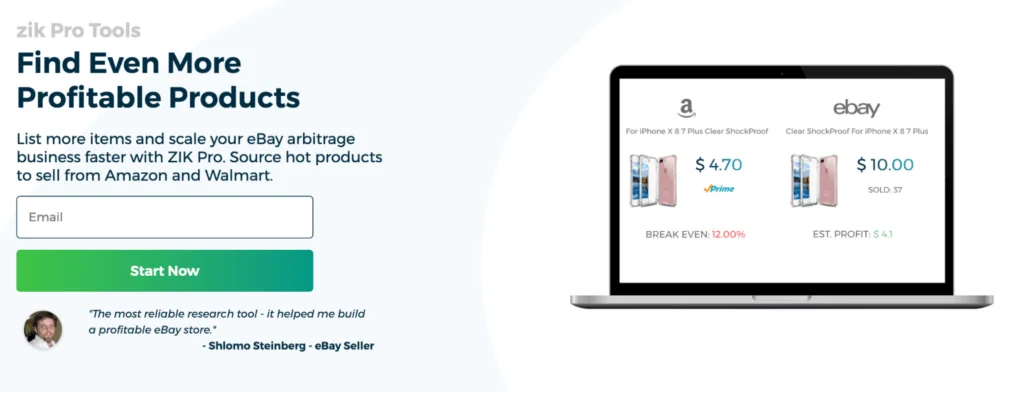
ZIK Pro Tools is an add-on for ZIK Analytics, an e-commerce software for eBay sellers. ZIK Pro Tools can help you source products from other marketplaces like Amazon and Walmart and sell them on eBay.
If you need ideas, use Zik Pro Tools’ bulk scanner feature to scan other sellers on eBay and see what they’re selling. This feature also allows you to view metrics like the price, sell-through rate, and profit.
2- BuyBotPro
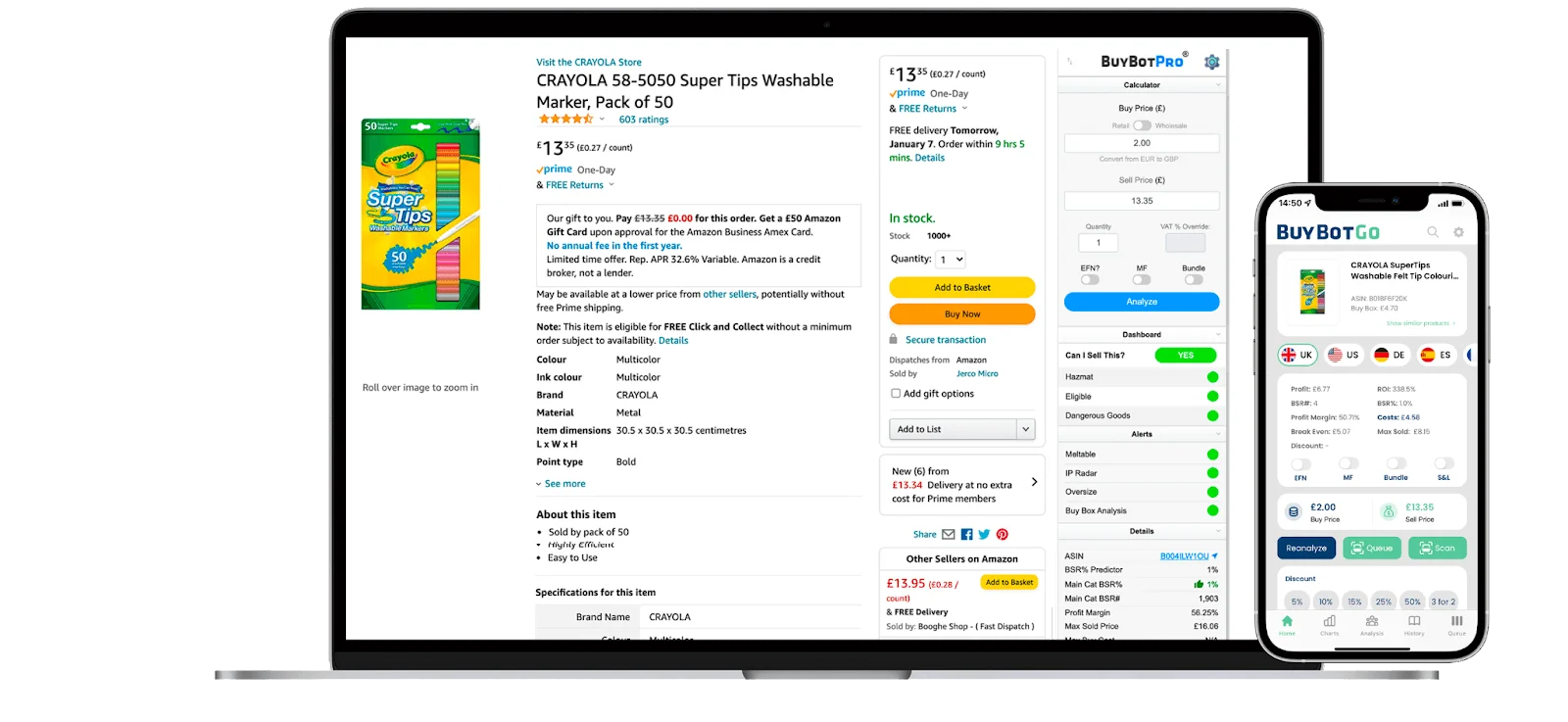
BuyBotPro is another tool you can use for online arbitrage on eBay. I particularly like the ROI and Profit Checker feature, which calculates your exact profit after shipping costs, taxes, and other fees.
BuyBotPro also has many analytics-focused features to help you determine how you stack up against your competition. Its Competition Analyzer considers your competition and provides a view of the top ten sellers, including their products’ prices and stock levels.
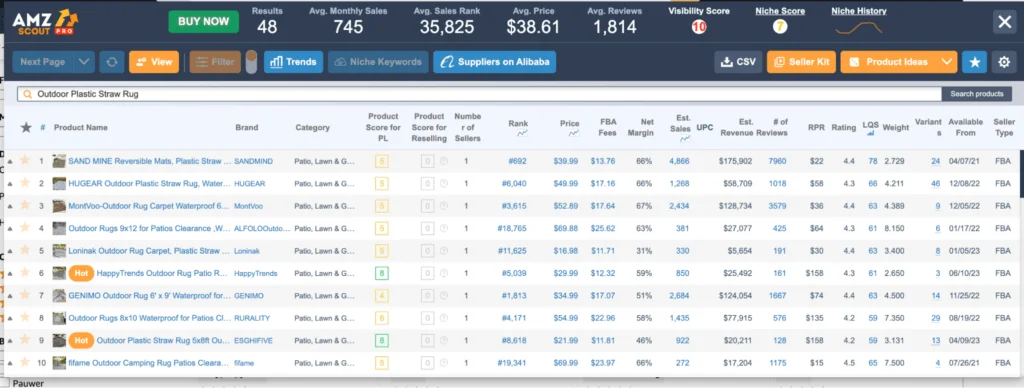
3- AMZ Scout
AMZ Scout has an Amazon arbitrage and dropshipping software that you can install as an extension. This software can increase sales, boost profitability, and cut costs by showing you the most profitable products.
You’ll be able to check out market trends to identify hot products and eliminate products with low margins or selling limitation. According to AMZ Scout, their software makes the process up to five times faster.

4- Tactical Arbitrage
Tactical Arbitrage has over 1,000 stores you can source from, and it adds new stores weekly. You can also upload a wholesale manifest that the tool will analyze to provide you with the most profitable products.
Should You Do Amazon to eBay Arbitrage? Pros and Cons
While the business model offers potential for profitability and flexibility, it also demands a keen understanding of market dynamics, platform policies, and continuous adaptation to stay successful.
Carefully consider the following pros and cons:
| ✅Pros | ❌Cons |
|---|---|
| Low Initial Investment | Platform Fees |
| Flexibility and Scalability | Market Volatility and Competition |
| Accessible Marketplaces | Risk of Account Suspension |
| Profit Potential | Ethical Considerations |
Pros of Amazon to eBay Arbitrage
- Low initial investment
Starting an arbitrage business typically requires a lower upfront investment compared to other business models. You don’t need to buy items in bulk, reducing upfront costs. - Flexibility and scalability
As your understanding and experience grow, you can scale your business by identifying more profitable products and increasing sales volume. - Accessible marketplaces
Both Amazon and eBay are well-established marketplaces with a broad customer base, providing ample opportunities to reach potential buyers. - Profit potential
Exploiting price discrepancies between the platforms can lead to potentially higher profit margins, allowing you to capitalize on favorable market conditions.
Cons of Amazon to eBay Arbitrage
- Platform fees
Both eBay and Amazon charge seller fees, which can eat into profit margins. Additionally, factors like shipping costs, returns, and taxes can further reduce profits. - Market volatility and competition
Prices on both platforms can fluctuate, and competition can be fierce. - Risk of account suspension
Violating platform policies, selling prohibited items, or receiving negative feedback can lead to account suspension or penalties, affecting your business continuity. - Ethical considerations
Some customers might perceive arbitrage as price gouging, potentially affecting your reputation.
The Bottom Line
Now that you’re familiar with Amazon to eBay arbitrage, don’t be afraid to take on the challenge and start your online arbitrage journey today.
While this business isn’t exactly risk-free, it’s still a good way to earn some side income and dip your toes in online selling. If you want fewer risks and lower upfront investment, consider starting a dropshipping business instead.

